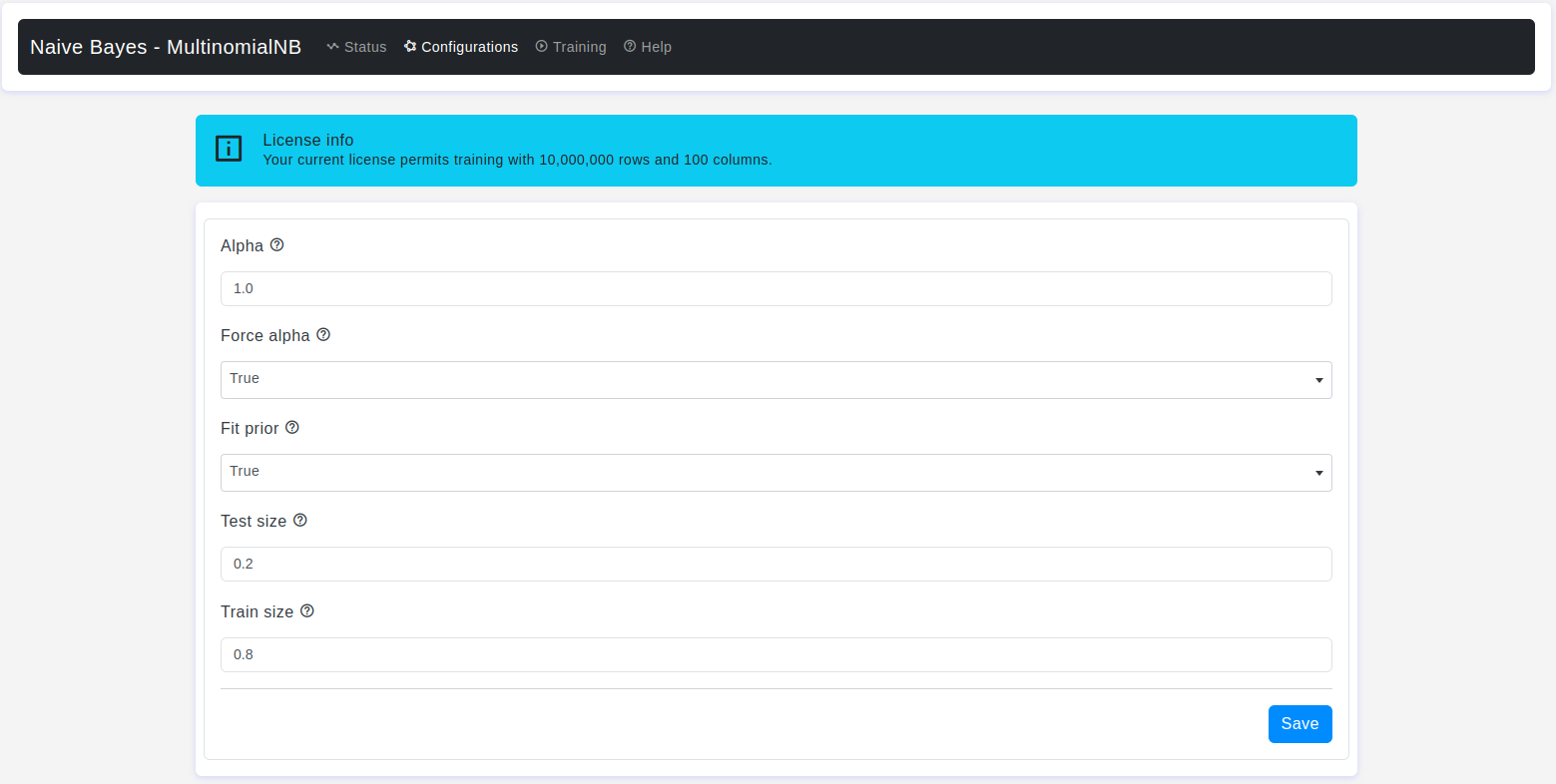
Overview:
In the evolving world of machine learning, the ability to create, train, and evaluate models with ease is invaluable for both novice and experienced data scientists. OtasML shines as a visual machine-learning tool designed to simplify these processes, enabling users to interact intuitively with complex algorithms. This article delves into the specifics of Naive Bayes, particularly the MultinomialNB classifier, within OtasML, and explains how various configurations can be adjusted for optimal model performance.
Configurations page:
The Configurations page is where users can fine-tune the settings of the MultinomialNB classifier. Let’s explore these parameters in detail:
Alpha
- Default Value: 1.0
- Description: This is a smoothing parameter used during probability calculation. It prevents zero probabilities and mitigates the impact of missing features in the training data, ensuring more reliable probability estimates.
- Warning: Set
alpha=0andforce alpha=True, for no smoothing
Force Alpha
- Default Value: True
- Description: If
Falseandalphais less than 1e-10, it will setalphato 1e-10. If True,alphawill remain unchanged. This may cause numerical errors ifalphais too close to 0.
Fit Prior
- Default Value: True
- Description: Determines whether class priors should be learned from the training data. Class priors are the probabilities of each class occurring in the dataset.
True:Class priors are learned from the training data, meaning they are estimated based on the relative frequencies of each class.False:Equal prior probabilities are assumed for all classes, rather than being learned from the data.
Test Size
- Default Value: 0.2
- Description: The
test sizeparameter is used when splitting the dataset into these subsets, and it specifies the portion of the data that will be used for testing.
Train Size
- Default Value: 0.8
- Description: The
train sizeparameter is used when splitting the dataset into these subsets, and it specifies the portion of the data that will be used for model training.
Conclusion
OtasML provides a user-friendly interface for configuring the MultinomialNB classifier. By understanding and utilizing the detailed configurations available, users can fine-tune their models to achieve the best performance on their datasets. Whether adjusting the alpha parameter for smoothing, setting the appropriate train-test split, or learning class priors from the data, OtasML empowers users to build accurate and reliable models with ease. Explore OtasML today and elevate your data science projects with visual machine learning.
